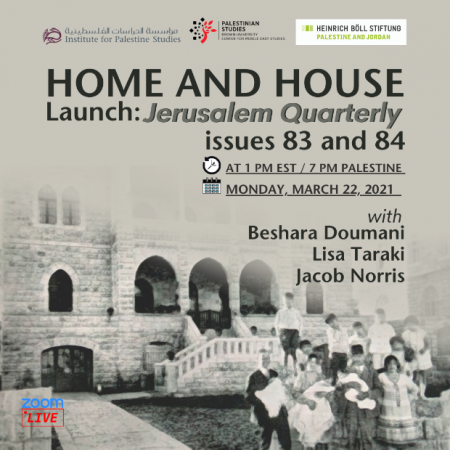“House” is the primary site of capital investment for most Palestinians who live within the borders of Mandate Palestine, primarily because their marginalized political and economic position as a people denied leaves them with few other options. The construction of houses and transformation into homes, often a product of a lifetime of work and sacrifice, constitutes the core of the built environment. Houses and the built environment, in turn, are shaped by the power relations embedded in the organization of labor, property, and urban planning regimes; and in the physical infrastructures and networks of energy, water, telecommunications, and the circulation and production of building materials. At the same time, Palestinian houses are inextricably linked to relentless processes of demolitions, evictions, and land dispossession. The discursive and materialist dimensions of Palestinian homes and houses raise a host of questions about the politics of daily life. How are houses made into homes and vice versa? What can homes tell us about gender and generational dynamics and the production of “Palestinianness”? How are domestic relations and living arrangements shaped by permit systems that regulate and restrict building, residency, ownership, and marriage? What does home mean in the context of serial displacements, economic insecurity, and the scattering of family? What can we learn from variations in design and building material of Palestinian houses across space and time?
A partnership between Institute for Palestine Studies and the New Directions in Palestinian Studies (NDPS) initiative at Brown University. Supported by Henrich Boll (TBC).

